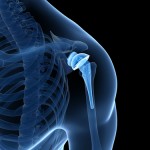
This update of a Cochrane review of the relative benefits and harms of different surgical treatment modalities for oral cavity and oropharyngeal cancers includes 15 RCTs. Moderate-certainty evidence from 5 RCTs showed trials that elective neck dissection of clinically negative neck nodes at the time of removal of the primary oral cavity tumour is superior to therapeutic neck dissection, with increased survival and disease-free survival, and reduced locoregional recurrence.
[read the full story...]







